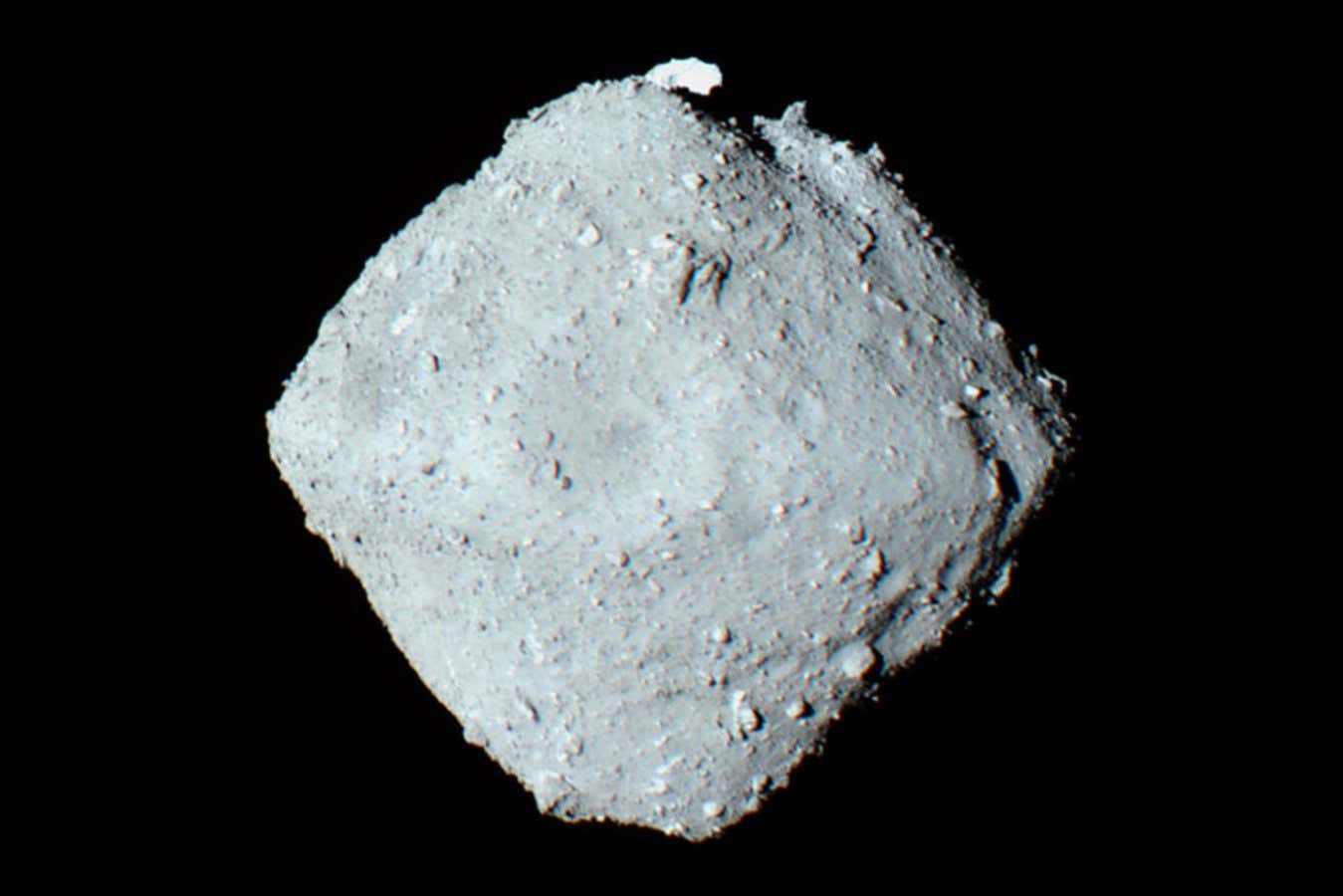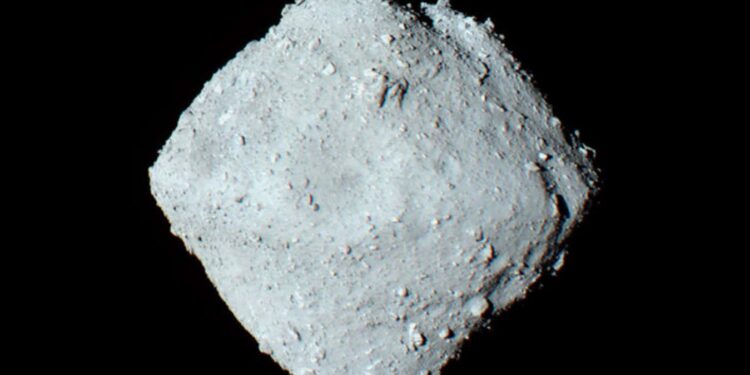
The asteroid Ryugu, photographed by the Hayabusa 2 spacecraft
JAXA Hayabusa 2
Large quantities of water once flowed through the asteroid Ryugu, an indication that asteroids could have brought much more water to Earth than previously thought.
The origin of Earth’s water is somewhat mysterious. Incoming asteroids have been proposed as a possible source, but there are doubts about whether there have been enough impacts to bring all the water on the planet today.
Carbonaceous asteroids like Ryugu form from dust and ice in the outer solar system. In 2019, Japan’s Hayabusa 2 spacecraft landed on Ryugu and collected 5.4 grams of material that was brought back to Earth in 2020.
Early photos of Ryugu indicated that it was far drier than expected, but more recent work found that the object was riddled with cracks that once could have been filled with crucial ingredients for life, including water.
Initial dating of the samples suggested that the asteroid was one of the oldest objects in the solar system, possibly dating as far back as its formation 4.6 billion years ago.
But when Tsuyoshi Iizuka at the University of Tokyo and his colleagues estimated its age based on the radioactive decay of lutetium-176 to hafnium-176 in minute samples from the asteroid, they were surprised to get a date that was too old to be possible.
“We got ages of around 4.8 billion years for Ryugu samples, which are far older than the age of the solar system,” says Iizuka. “This means the clock is off in Ryugu samples.”
Instead, the team believes that around a billion years after the formation of Ryugu’s parent body, something warmed up the asteroid enough to turn ice to liquid water. This would have carried away some of the lutetium-176, corrupting the dating method.
Solar radiation would only warm ice on the surface to a maximum depth of 40 centimetres, whereas the Ryugu samples came from a depth of up to a metre. To heat the interior of the parent asteroid, the most likely explanation is a collision with another object, the researchers say.
By estimating the volume of water required to alter the amount of lutetium-176 in the Ryugu samples, the team calculates that the asteroid was 20 to 30 per cent water – much higher than previous estimates.
Iizuka says it has been assumed that asteroids delivered water to the planets as minerals. “Our results suggest that they actually could deliver water not only as hydrous minerals but also ice,” he says.
The findings show what can be learned from a sample return mission, says Jonti Horner at the University of Southern Queensland in Australia, who wasn’t involved in the study. “We’ve gone there and we’ve picked the samples up, so the Earth has not interfered at all. It means you can be a lot more confident in the story that you get,” says Horner.
“Suddenly we have evidence that these things were wetter than we previously thought, which meant that they can more reasonably explain the origin of the Earth’s oceans when they hit the early planet,” he says.

The world capital of astronomy: Chile
Experience the astronomical highlights of Chile. Visit some of the world’s most technologically advanced observatories and stargaze beneath some of the clearest skies on earth.
Topics:
Source link : https://www.newscientist.com/article/2495745-asteroid-ryugu-once-had-liquid-water-flowing-through-it/?utm_campaign=RSS%7CNSNS&utm_source=NSNS&utm_medium=RSS&utm_content=home
Author :
Publish date : 2025-09-10 16:00:00
Copyright for syndicated content belongs to the linked Source.









